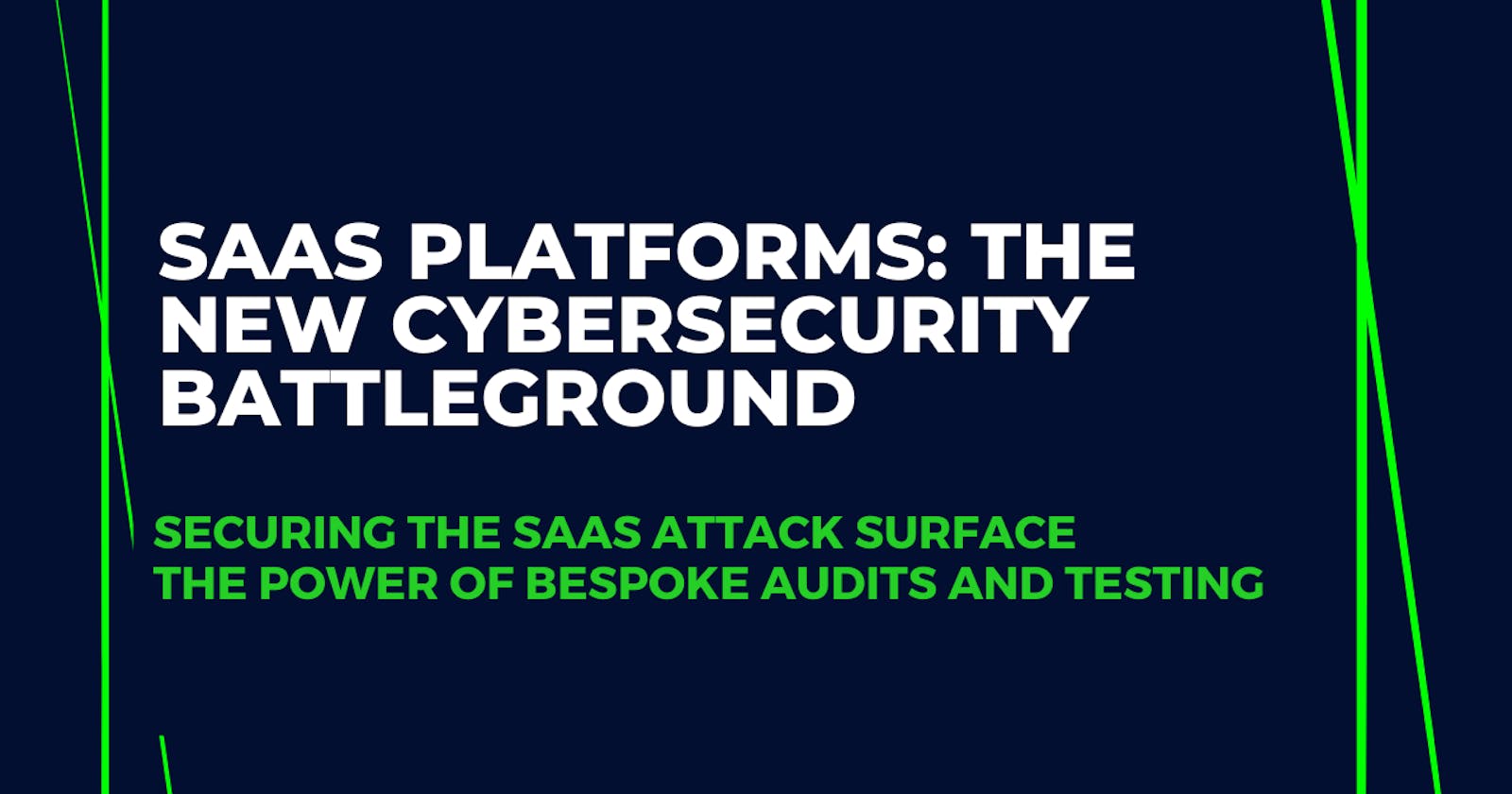SaaS Platforms: The New Cybersecurity Battleground
Securing the SaaS Attack Surface: The Power of Bespoke Audits and Testing
As organizations continue adopting Software-as-a-Service (SaaS) platforms at a rapid pace, these cloud platforms have become a new cybersecurity battleground. SaaS spending has now surpassed investment in traditional infrastructure 3 to 1, yet many companies are still under-securing these critical applications.
Once the realm of on-premises apps and infrastructure, hacking has expanded to the cloud. Data shows SaaS spending outpacing IT infrastructure investments resources dedicated to locking down SaaS environments haven't kept pace. It’s an alarming imbalance, like buying a Bugatti without insurance – the data crown jewels are left overexposed.
With more sensitive company operations and data concentrated in SaaS apps, attackers are shifting focus to exploit these environments. Without proper governance and security controls tailored to your organization's specific SaaS tenants, data is being exposed.
The Need for Visibility Through Audits and Testing
Many assume the SaaS provider fully handles security, but customers are still responsible for properly configuring and managing their own data security. Common oversights include:
Failing to fully audit user permissions, sharing settings, and access policies on a regular basis
Not monitoring user activities, data access, and events for anomalies
Neglecting to implement SaaS-specific tooling for log analysis and visibility
Overlooking misconfigured APIs that grant overbroad access due to integrations
Lacking visibility into attribution details needed for effective incident response
By partnering with a firm that specializes in auditing and testing SaaS environments, organizations can identify and address security gaps.
Key Areas for Assessing SaaS Security Posture
- Permission and Access Reviews
SaaS platforms often have complex, hidden permission structures that tend to accumulate user entitlements over time. Comprehensive user access reviews are essential for ensuring the least privilege and reducing insider threat risk.
- API and Integration Audits
Custom-built integrations with SaaS platforms can unintentionally expose more data than intended if APIs are not properly scoped. API security testing will uncover any risky configurations.
- Log and Activity Analysis
Analysis of administration, user, and system-level events provides vital insights into potential misuse and anomalies. But without proper log handling and visibility, dangerous incidents can be missed.
- Incident Response Preparedness
Understanding what attribution details are available and crafting playbooks will improve response capabilities when a SaaS application is compromised. Failing to prepare leads to chaotic, ineffective response.
- Attack Surface Reduction
Scanning for and closing down unmanaged backdoors, legacy integrations, unnecessary extensions, and orphaned accounts limits the attack surface.
Moving SaaS Security Forward
With mounting threats targeting cloud applications, SaaS security can no longer be an afterthought. Organizations must invest in governance, auditing, monitoring, and testing tailored to their specific SaaS environment. Partnering with experienced firms advances the visibility and control needed to secure critical SaaS data.
The real-world impacts are far from hypothetical as Uber insiders abused SaaS apps to gin up fake revenue. With dispersed workforces accessing SaaS remotely, insider threats have become a glaring risk.
But external attacks also abound, often exploiting two common misconfigurations: over permissions and too broad API access. With complex settings and integration options, mistakes get made. Snapchat employee credentials compromised via reused passwords highlighted how one vulnerability provides the foothold hackers need.
Yet detecting issues demands comprehensive visibility that most lack. The distributed nature of SaaS data across vendor infrastructures poses monitoring hurdles. Blind spots emerge as activity logs overflow with noisy events lacking context. Security analysts desperately need attribution details to separate benign alerts from urgent threats hiding in plain sight.
Securing SaaS Requires Custom Tailoring Off-the-shelf security solutions only go so far. To match the unique ways organizations use and integrate SaaS apps, the approach must be tailored.
Treating SaaS platforms like black boxes lead to failures. For true defense in depth, companies must move beyond the perimeter to govern interior data flows and access. Only custom audits expose the policy gaps, risky configurations, and insider access abuses that evade detection.
Ongoing testing is equally essential as changes constantly introduce new weaknesses. Integrations with partners through APIs and microservices multiply the potential vulnerabilities. What was secure yesterday may not withstand tomorrow’s threats.
For SaaS environments, only customized governance based on in-depth audits can provide the visibility needed to thwart attacks. The key is approaching SaaS security as an ongoing process, not a checkbox. Audits provide baseline visibility while regular testing evaluates the ever-changing attack surface. Prioritizing robust SaaS governance today prevents disastrous breaches tomorrow.

